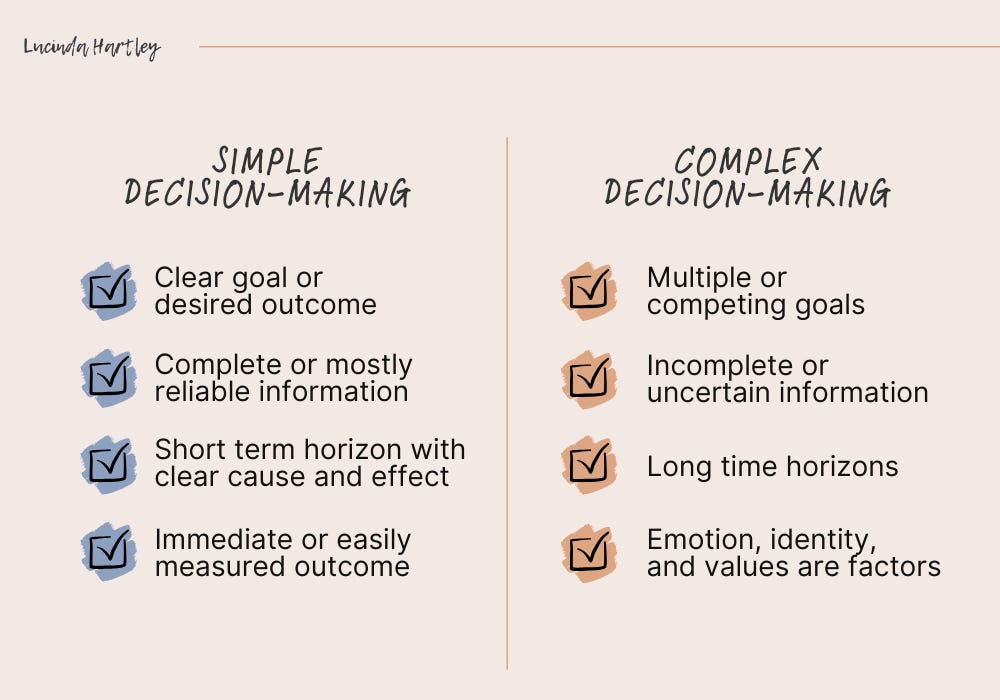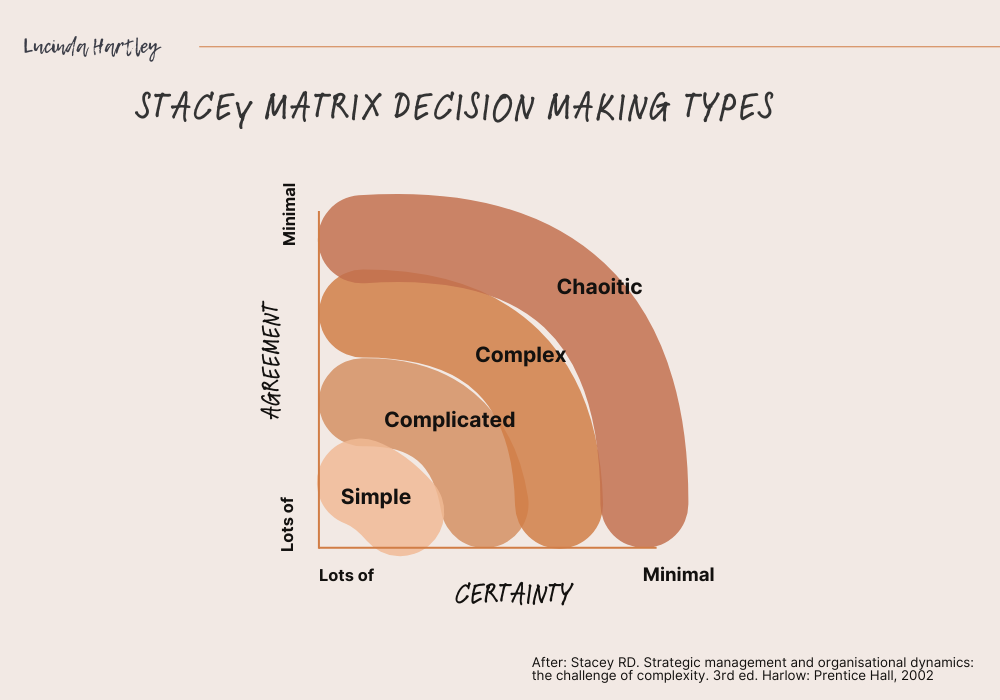How to make complex decisions - like how to vote.
How do you make good decisions when everything is uncertain, and everyone disagrees? A quick guide to complex decisions, values, and voting — sausage sizzle included.
“Looking forward to nerding out on your insights.” - Paid Subscriber
Australia heads to the polling booth tomorrow on May 3rd for the next federal election. After 37 days of campaigning, we’ll line up at local schools and community halls to elect our new government for the next 3 years, and probably grab a sausage from the local primary school fundraiser as well.
For all its imperfections, I love Australia’s constitutional democracy. I love that election campaigns last 37 days - yes you read that right - days, not months. I love that voting is compulsory, which means every single one of us is required to think, even just briefly, about our political priorities. And I love the logistics of it: within those same 37 days, the Australian Electoral Commission manages to set up polling stations across the country so that nearly every citizen is within a five-minute walk of a place to vote. It’s a level of logistics I marvel at and often wonder if we’d be better off if the Australian Electoral Commission ran the country.
Most of all, I love that we have a peaceful transition of power. We line up patiently, behind people holding how-to-vote cards in different colours from our own. Often, the most important decision on election day is choosing the polling booth based on the sausage size. (If you haven't decided on your sausage quality yet, check out Democracy Sausage. You're welcome.)
On a more serious note, this election both major parties have, refreshingly, placed housing affordability and the cost of living front and centre. It’s long overdue. The median house price in capital cities has just tipped over $1 million, more than 10 times the median income of $98,000. While no policy on offer is quite bold enough to meaningfully turn the tide, it’s a step in the right direction.
This post isn’t a critique of the proposed housing policies - although happy to provide my views on those in another post if that’s of interest. (In the meantime, if you’re after a breakdown of housing policy, I’d recommend checking out The Grattan Institute’s analysis).
What I want to talk about decision making, and how we can think about complex decisions—like voting.
Simple vs. Complex Decisions
Most decisions we make in life are simple decisions - what to cook for dinner, or deciding to buy the cheaper of two identical phones. Choosing what time to vote and, importantly, which booth has the best snag are also simple decisions.
Others, like how to vote, are deeply complex. To summarise:
Simple decisions: Have clear outcomes, complete or near-complete information, are often short-term and carry little emotional weight.
Complex decisions: Competing values, short and long-term impacts, uncertain outcomes, and often incomplete or unknown information and involve multiple factors, many of which may compete and conflict.
Simple decisions often benefit from rules-based thinking or logic. You can research and identify the rules - like the price of a phone or the ratings on the best sausage sizzle, and then make an informed decision.
Complex decisions are less about logic and more about alignment: with your values, your goals, and your beliefs about what kind of future you want to see.
Making decisions when there is uncertainty and disagreement
The Stacey Matrix developed by Ralph D. Stacey, is a leadership framework used to understand the type of decision environment you’re in—especially when dealing with uncertainty and disagreement. It maps decisions across two axes:
Certainty: How clear and predictable are the outcomes?
Agreement: How much do people agree on what to do?
In this Stacey Matrix, voting sits in the “complex” rather than “complicated” zone. When you're in the complex zone there is:
Low certainty, low agreement
No right answer, outcomes emerge over time
While this framework doesn't make decisions any easier, it can help describe the approach needed, by knowing the environment. In a simple operating environment, decisions can be process-oriented and rules-based. In a complex environment, pattern matching and iteration are more important rather than rigid planning. Failing to notice this distinction is a core reason Why Plans Fail, which I wrote about earlier.
Voting as a Complex Decision
The challenge with decisions like voting is that we think of it as a simple, transactional act: read the policies, compare parties, tick a box.
But in reality, voting is a complex decision because:
There is no single “right” answer.
Outcomes are uncertain.
We don’t have (and can’t have) all the information.
Trade-offs are needed where the perfect solution doesn’t exist.
That’s complex - even if you do like to number every-single-box below the line in the senate ballot paper, like I do (there are 65 in Victoria this year, FYI).
How to Make Complex Decisions (Like Voting) Simpler
An analogy I’ve heard which resonates is to think about voting like public transport. You’re not going to find a candidate or party that aligns with you on everything. You’re choosing the bus that gets you closest to where you want to go, or at least, is heading in the same direction.
So, here are some ideas on how to navigate it:
Start with values
What matters most to you? Is it housing? Climate?Health? Education? Short-term benefits or long-term change?
Match policies to values
Use tools like Ballot Box or Vote Compass to see which parties align most with your views in their policies.
Read and educate - Look for trusted sources
The ABC, The Guardian, and your local council often offer side-by-side, fact-checked policy breakdowns.
Think locally
What have your local candidates done for your area? Are they visible, active and connected to your community?
Talk to people with different views
Find people who don’t think like you. It’s one of the best ways to challenge your assumptions and make more grounded choices.
Aim for alignment, not perfection
There are no perfect solutions. You’re choosing a direction of travel. Find the candidate or party that gets you closest to where you want to go.
Final thought
I certainly have views on which bus is the most important in terms of issues that impact the long term - like basic fundamentals of housing affordability and doing everything we can to mitigate the impacts of a hotter, more volatile climate. But this post isn’t about telling you how to vote, it's about acknowledging that it’s complex, and imperfect, and the best we can do is try to vote for the bud that’s heading in the right direction.
Happy voting 🌭
📣 How much thought do you give to voting? Please leave a comment





